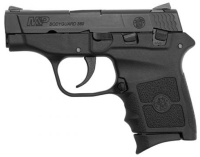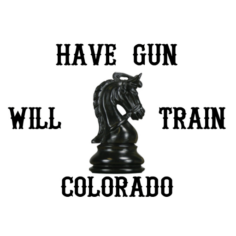 Many people are confused about safeties on a Concealed Carry Handgun and what they are all about. First, if a Concealed Carry Handgun has a safety you are obligated to use it. You don’t get to pick and choose. If a safety is present then not using it is failing to operate your firearm safely and correctly. You can’t look at a similar gun and say well that gun doesn’t have a safety so it must be optional. Manufacturers put safeties on guns for many reasons. It’s a safety rule for handling firearms that goes way back. Remember when you took Hunters Safety you were taught that when the gun is loaded you put on the safety. Then when its time to fire the gun you take the safety off and fire. This is how guns with safeties must be operated. Safe triggers and grip safeties are safety features, not safeties. A Safety is an on/off switch. Safeties can fail they are mechanical devices. Anything mechanical can break you can not totally rely on a safety. Some people think a gun without a safety is not safe. That is not true many Concealed Carry Handguns are made without safeties because it just one more thing to have to do when you pull your gun for self-defense and it takes time. Safety is in keeping your finger off the trigger until it’s time to shoot( Rule #3). Sure this takes practice but that’s how firearms are operated safely.
Many people are confused about safeties on a Concealed Carry Handgun and what they are all about. First, if a Concealed Carry Handgun has a safety you are obligated to use it. You don’t get to pick and choose. If a safety is present then not using it is failing to operate your firearm safely and correctly. You can’t look at a similar gun and say well that gun doesn’t have a safety so it must be optional. Manufacturers put safeties on guns for many reasons. It’s a safety rule for handling firearms that goes way back. Remember when you took Hunters Safety you were taught that when the gun is loaded you put on the safety. Then when its time to fire the gun you take the safety off and fire. This is how guns with safeties must be operated. Safe triggers and grip safeties are safety features, not safeties. A Safety is an on/off switch. Safeties can fail they are mechanical devices. Anything mechanical can break you can not totally rely on a safety. Some people think a gun without a safety is not safe. That is not true many Concealed Carry Handguns are made without safeties because it just one more thing to have to do when you pull your gun for self-defense and it takes time. Safety is in keeping your finger off the trigger until it’s time to shoot( Rule #3). Sure this takes practice but that’s how firearms are operated safely.
Why is it that Concealed Carry Handguns are considered safe when they are holstered? Because in a proper holster you cannot access the trigger when the gun is holstered. Guns do not fire unless someone or something pushes the bang switch. Second many Concealed Handguns now are made without safeties and that doesn’t mean they are not safe? You will notice that on most revolvers there are no safeties. Generally speaking, this is because of the long double action trigger pull that is required to fire them usually about 8-10 lbs of pressure. One of the things I see a lot is that the safety is hard or impossible to operate on some of the chosen firearms. When you pick a gun and decide that’s the Concealed Carry Handgun you want you should have no problem operating all the features. If you can’t operate the safety it isn’t going to get any better later. I’m not gonna pick on guns in this article. I’ve carried many guns with safeties that worked properly, and I’ve seen many that are hard to operate, and I’ve practiced many hours with those firearms. If I picked one up today I instinctively know how the safety works and where it is.
Many people that have carried 1911 style handguns know that a safety is essential on that style gun. This is because the 1911 model gun is a single action gun with a very tiny trigger pull. It’s really easy to have an accident with a 1911 style Concealed Carry Handgun if you are not using the safety properly. The other thing I like about no safety is in my carry rotation (wearing different guns for different seasons or styles of dress) all the guns operate the same way draw, point, and shoot. When I carry a gun like a 1911 for concealed carry I have to have some orientation time and I will carry it for some period of time, not just one day. Switching guns often that operate differently is a good way to get confused have an accident or maybe not be ready when you need the gun.
Then there are the people who solve all these problems by rational thinking. I have children! If they get hold of the gun maybe they won’t be able to figure the safety out, or I can’t keep my finger off the trigger so I need to have a safety, or I just don’t put one in the pipe that way I won’t make a mistake. If any of these ring a bell maybe you need some more training!
Update September 2018
I am seeing a move towards the AIWB (appendix inside the waistband) carry mode. This mode is the fastest to get the gun on target and explained by some to be the most dangerous method of carrying a concealed firearm. You are pointing your gun at the femoral artery in your leg and your Manley toolbox if you are a male. Some advocates of appendix carry have moved to guns with safeties and or traditional DA/SA (double action-single action )guns that are hard to pull the trigger. Thus preventing the dreaded accidental discharge from a Glock type weapon stuck in the front of your pants.
Articles you may be interested in:
Learn To Shoot Pueblo Colorado
